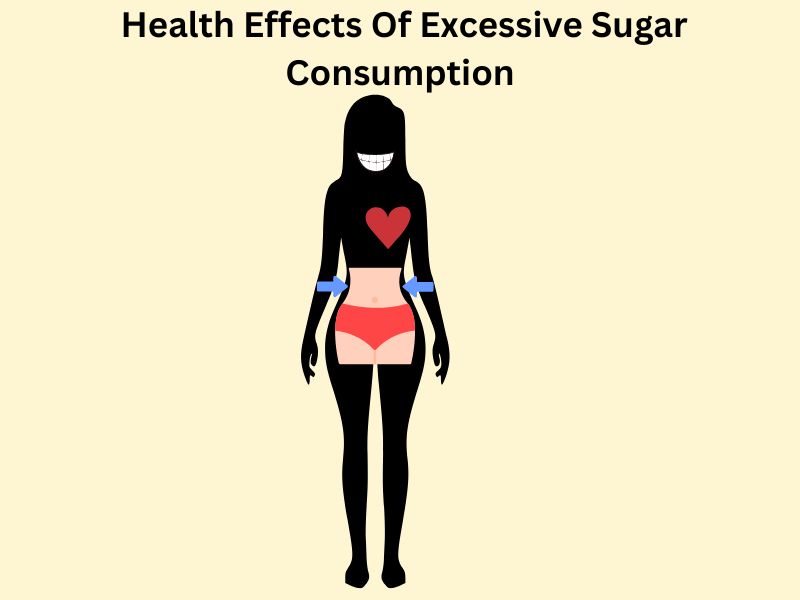When we bake, we often reach for the white sugar. But did you know there are other sweet options out there? Many people are now choosing different kinds of sugars for health reasons or just to try new flavors. Let’s take a closer look at these sugar alternatives.
Why Should You Consider Alternative Sugars?
We all love a sweet treat now and then, don’t we? But have you ever thought about how much white sugar we consume daily? From our morning cereals to the sodas we drink, white sugar is everywhere. And while it makes things taste delightful, too much of it can be harmful. Regularly eating lots of white sugar can lead to weight gain. Over time, this can strain our hearts and even lead to diseases like diabetes. Our teeth aren’t fans of too much sugar either; they can get cavities. It’s a bit like sunbathing; a little can give us a lovely glow, but too much can harm our skin.
Sugar isn’t just about sweetness; it has a story. The story of white sugar starts in fields where sugarcane or sugar beets grow. To make space for these crops, many trees are cut down, which isn’t good for our planet. Trees help clean our air, so we need them! Plus, turning these plants into the white sugar we know uses a lot of water and can harm nearby rivers and lakes. By choosing alternative sugars, we’re also choosing to care for our beautiful Earth.
We all have that one friend, don’t we? The one who’s trying a new diet or can’t eat certain things. Some diets, like the vegan or keto diet, have rules about sugars. For vegans, it’s about not using products from animals. For those on a keto diet, it’s about cutting down on carbs. Then there are our friends with allergies or sensitivities. They might get tummy aches from certain sugars. Having a range of sweet options means everyone can join in the fun, whether it’s a birthday party or just a weekend bake-off.
Choosing alternative sugars isn’t just a trend; it’s about making choices that are good for our bodies, our friends, and our planet. So next time you’re shopping or baking, maybe give one of these alternatives a try. Your body and the Earth will thank you!
Popular Alternative Sugars to Try

There are many sugar alternatives available. Let’s cover a few, shall we?
Stevia
Have you ever come across a little green plant called Stevia? It’s quite the wonder! Stevia is nature’s way of giving us something super sweet without the calories. Extracted from the leaves of the Stevia plant, this sweetener is a favorite for those watching their weight. But it’s not just about the calories; Stevia doesn’t cause those sugar spikes in our blood, making it a friendlier option for many. While its taste is unique and might remind you a bit of licorice, it’s a fantastic sugar substitute in drinks and desserts. And the best part? A little goes a long way!
Agave Nectar
If you’re a fan of syrupy sweetness, agave nectar might be your new best friend. Made from the sap of the agave plant, this golden liquid is often seen as a vegan alternative to honey. It pours smoothly and has a mild, sweet taste, making it perfect for drizzling over pancakes, waffles, or even your morning bowl of yogurt. But here’s a tip: because it’s sweeter than regular sugar, you might want to use a bit less when swapping it in recipes.
Coconut Sugar
Imagine the tropical scent of coconuts. Now, imagine that in a sugar form. That’s coconut sugar for you! Made from the sap of coconut palm trees, this sugar has a delightful caramel-like flavor. It’s not as sweet as regular sugar, which means your treats will have a more subtle sweetness. Plus, coconut sugar has some minerals and vitamins, making it a tad healthier. It’s a fantastic addition to cookies, cakes, and even savory dishes that need a touch of sweetness.
Monk Fruit Sweetener
Monk fruit might sound like something out of a fairy tale, but it’s very real and very sweet. This small, round fruit is native to Southeast Asia and has been used for centuries for its sweetness. The magic of monk fruit is that it gives a sugary taste without any actual sugar. This means zero calories! It’s especially popular among those who follow low-carb diets. The sweetness comes from natural compounds called mogrosides. When using monk fruit sweetener in your recipes, remember it’s much sweeter than regular sugar, so adjust accordingly.
Each of these alternative sugars has its unique charm and benefits. Whether you’re looking for a calorie-free option, a vegan sweetener, or just something new to try, there’s a world of sweet possibilities out there. So, why not give one (or all) of them a go in your next baking adventure?
How Can We Add Alternative Sugars Into Our Diet

Baking is like a fun experiment in the kitchen. When we decide to use a different sugar, it’s a bit like changing an ingredient in a magic potion. Each sugar has its own special qualities. For instance, if you’re thinking of using Stevia in your chocolate chip cookies, remember it’s way sweeter than regular sugar. So, you’ll need less. On the other hand, coconut sugar has a coarser texture, which can give your cookies a lovely crunch. It’s always a good idea to start with a recipe that’s been tested with the alternative sugar you’re using. And if you’re feeling adventurous, you can always tweak and test until you get your perfect treat!
Morning routines often start with a comforting drink, be it coffee, tea, or a smoothie. These moments can be made even better with a touch of sweetness. Instead of reaching for the white sugar, why not try a dash of agave nectar in your tea? Or sprinkle some coconut sugar on your cappuccino froth. If you’re into cold drinks, monk fruit sweetener is a great choice for lemonades or iced teas. It dissolves easily and won’t add any calories. The key is to experiment a little. Each day, you can try a different sweetener and find out which one makes your morning drink just right.

Shopping for food can sometimes feel like a treasure hunt, especially when we’re trying to make healthier choices. Those long lists on the back of products? Those are the clues. Many products, even those that don’t taste sweet, can have hidden sugars. They might be called things like “corn syrup,” “maltose,” or “fruit juice concentrate.” By becoming a detective in the supermarket aisles and reading these labels, you can choose products that go with your sweet goals. And remember, just because it’s an alternative sugar doesn’t mean it’s always the best choice. It’s all about balance and understanding what goes into our bodies.
Possible Downsides of Some Alternative Sugars

It’s easy to think that if it’s not regular white sugar, it must be calorie-free. But that’s not always the case. For instance, agave nectar and coconut sugar do have calories. While they might offer a richer flavor or other benefits, if we use them in large amounts, they can still contribute to weight gain. It’s a bit like choosing between different types of fruits; some might have more sugars or calories than others. The key is to know what you’re adding to your dishes and drinks and to use them wisely..
Just because a sugar is natural or alternative doesn’t mean we can have heaps of it. Too much of any sweet thing, even if it’s from a plant or fruit, can still affect our health. For example, consuming a lot of agave nectar, which is high in fructose, might not be great for our liver. And while Stevia is calorie-free, using it excessively might leave you with an aftertaste or upset stomach. It’s like sunbathing; a little sun is wonderful, but too much can give us a sunburn. The same goes for these sugars: enjoy them but in moderation.
Life is all about balance, isn’t it? The same goes for our diets. While it’s exciting to try new alternative sugars and discover their unique flavors, it’s essential to keep a balance. If one day you indulge in a cake sweetened with coconut sugar, maybe the next day, you can opt for a fruit salad with a sprinkle of monk fruit sweetener. It’s also good to pair these sugars with foods rich in fiber, like whole grains or nuts, to help balance blood sugar levels. Remember, the goal is to enjoy the sweetness of life while taking care of our health.
Exploring alternative sugars is a delightful and tasty journey, but like any journey, it’s important to be prepared and informed. By understanding the potential drawbacks and being mindful of our choices, we can enjoy these sweet alternatives in the healthiest way possible.
Sugar, whether an alternative such as coconut sugar or our everyday regular sugar, is important when we bake. Not just for the sweetness but the effects on the texture of our baked goods.
Final Thoughts

Choosing different sugars can be a sweet adventure. They can be a good change from the regular sugar we know. Some are better for our health, and some are kinder to our planet. But remember, just like with all sweet things, it’s good to use them in the right amount. It’s all about finding what’s best for us and enjoying our treats! So, next time you bake, why not try a new sugar? You might discover a new favorite flavor.
Have you tried using alternative sugars? If so, which one was your favorite? Please leave me a comment below
And As Always
Keep On Baking!
Taianne
Share The Love

I’m Taianne, the owner and operator behind We Are Baking. Baking my first cake at age 11 hooked me on creating sweet treats. Though my interest faded during childhood, it was rekindled when I married my apple pie-loving husband. I love trying new recipes, tweaking classics, and helping others learn the science and art of baking. I started We Are Baking to share tips, tricks, and favorite recipes I’ve discovered over the years. When not in the kitchen, I enjoy spending time with family and friends. My goal is to inspire others to embrace their creativity through baking. Feel free to contact me with any questions!
Taianne@wearebaking.com

